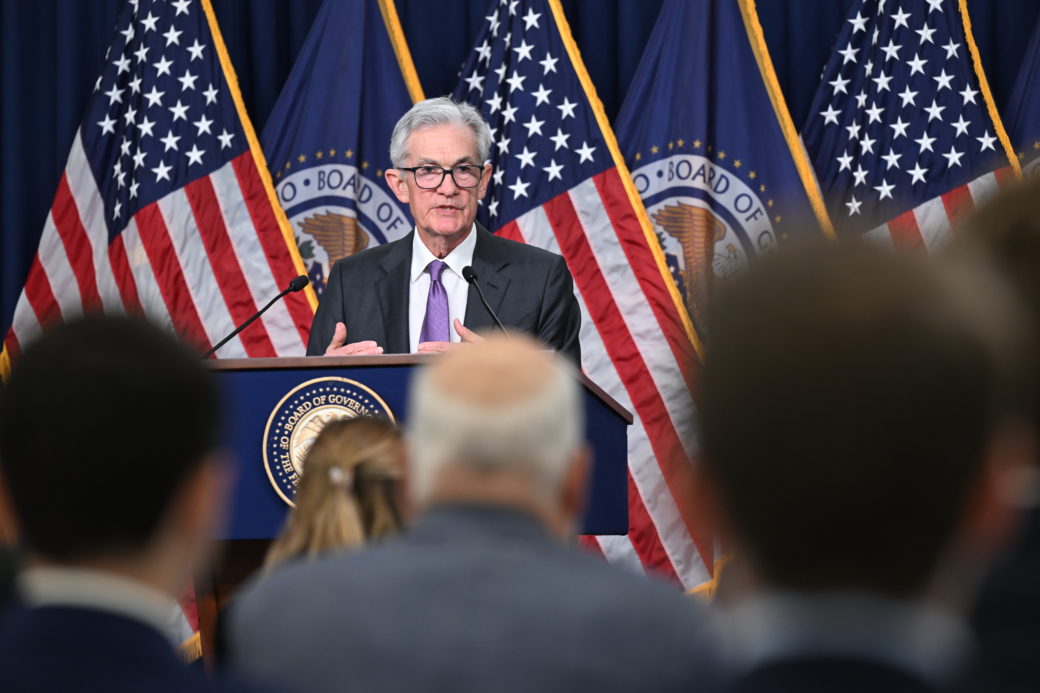The Federal Reserve Open Market Committee (FOMC) voted to leave interest rates unchanged during its March 2024 meeting. This is the fifth meeting in a row the Fed has voted to maintain current interest rates, meaning interest rates remain at a 23-year high of 5.25 to 5.50 percent.
Although the FOMC hasn’t reached its 2 percent inflation goal, the Fed maintained they still see a path forward this year to cut interest rates at least three times in 2024.
This was welcome news for consumers struggling with the high-cost of borrowing as well as many economists, whose confidence in interest rate cuts was waning after a recent consumer-price growth index report found inflation is in a bit of a holding pattern.
Over the last four months, the consumer price index (CPI) has shown that inflation isn’t slowing as quickly as it once was. Price pressures have been stuck around 3 percent, validating Fed Chair Jerome Powell’s claims that the final mile of bringing inflation down to the Fed’s ultimate 2 percent goalpost could be the most difficult.
One reason the Fed may not be panicking just yet over this stubborn inflation? Data from the Department of Commerce shows that inflation slowed faster in the year than officials had initially expected.
“We’re not going to overreact to these two months of data, but we’re not going to ignore them,” Powell said at the Fed’s post-meeting press conference. “We don’t really know if this is a bump on the road or something more. We’ll have to find out.”
Although the Fed still is optimistic they can cut interest rates three times in 2024, it’s not clear when we may see that first rate cut.
“We may be getting closer to the first interest rate cut, but it sure doesn’t feel that way,” says Greg McBride, CFA, Bankrate chief financial analyst. “The Federal Reserve needs to see continued improvement in the inflation readings to be confident that it is on track for the target of 2 percent.”
Fed Holds Interest Rate Steady Despite Signs of Stubborn Inflation
Interest rates have not increased since July 2023. But before this latest pause, the FOMC increased rates 11 times from nearly zero percent in March 2022 to the current 23-year high of 5.25 to 5.50 percent to combat high inflation.
However inflation is no longer the only thing eating away at consumers’ budgets. Borrowing costs, thanks to the Fed’s interest rate increases, are rising at the fastest pace in decades.
Average credit card rates, as of February 2024, are at a record high. The average rate sits at 20.75 percent, Bankrate data shows. Retail cards come with even higher interest rates near 29 percent.
This means that if you’re carrying a credit card balance this year, you may end up paying a great deal of money in interest, according to personal finance experts, and it’s getting harder to save money.
Credit card interest rates had been closer to 14 to 16 percent the past few years, according to Fed data. But since 2022, averages have skyrocketed to more than 20 percent APR. For accounts with revolving debt balances, the average is even higher: around 22 percent.
Borrowers are hurt the most in a high-rate environment, especially those with high-cost credit card debt. High-rate environments can be especially painful for the Americans who have no choice but to take on costlier debt, after a car breaks down or a roof leaks.
Fed officials think they’ll be able to cut borrowing costs eventually this year, but they’re cautious about giving the financial system more gas, too soon.
The Fed is unlikely to cut borrowing costs aggressively, even when the time for cheaper interest rates does come. How long the Fed decides to keep rates high will have major implications for every financial decision consumers make, as the higher interest rates make big-ticket purchases like mortgages, car loans, and credit card debt, even more burdensome.
Since most credit cards have a variable interest rate, there’s a direct connection between the Fed’s benchmark and the interest you pay on your credit card. In other words, as the federal funds rate rises, the prime rate increases as well, and credit card rates follow suit within one or two billing cycles.
If you are struggling to pay off high-interest credit card debt, now is the time to work on lowering your debt balances by contacting a nonprofit credit counseling organization like DebtWave Credit Counseling.
You can start your journey to financial freedom online or contact one of DebtWave’s certified credit counselors for a complimentary budget analysis here.


